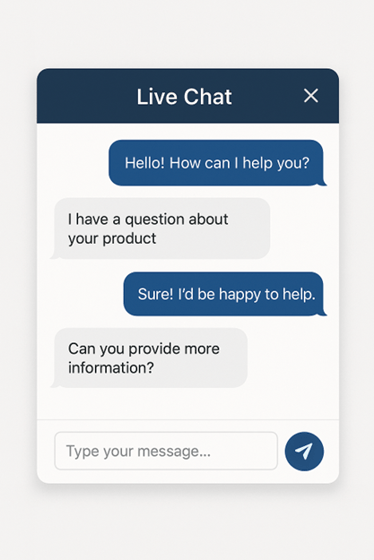Executive Summary
Today’s customers don't follow a straight line — they bounce between your website, app, CRM emails, ads, and chats in a single fluid motion. But if these touchpoints don't share context, the experience breaks down.
In this blog, we walk through a modern journey unification strategy:
- Identifying where the journey happens
- Mapping relevant data sources
- Connecting tools so they "speak the same language"
- Engaging with real-time journey management
- Scaling personalization and decisioning across platforms
Because when your data is connected, your customer experience feels connected — natural, relevant, and trusted.
Step 1: Identify Where the Journey Really Happens
Your customer journey doesn’t begin when they fill a form or end when they click “Buy.” It unfolds across dozens of fragmented moments — many of which your dashboards might not even track yet.
Common Journey Points:
- Website visits: search, comparison, product page friction
- CRM-driven campaigns: email opens, click fatigue, reactivation flows
- Mobile app usage: feature drop-offs, in-app nudges, session depth
- Ad touchpoints: impressions, clicks, post-click engagement
- Chat & support: FAQs, escalations, satisfaction signals
Tip: Stop thinking in funnels. Think in loops, restarts, and signals. That’s where the real experience lives.
Step 2: Identify the Right Data Sources & Channel Signals 
Once you know where journeys unfold, map the systems capturing those behaviors. Each tool has a part of the story — but without stitching them, you’ll never see the whole picture.
Map these:
- CRM: Customer history, campaign engagement, lead scoring
- Web Analytics: Paths, bounces, conversions, scroll depth
- Mobile App Data: Usage patterns, drop-offs, feature interest
- Ad Platforms: Retargeting loops, suppression signals, audience lists
- Chat & Support: Conversation logs, sentiment, resolution tags
Insight: The goal is not more data, but meaningful signals. Prioritize sources that influence journey decisions.
Step 3: Unify Tools So They Speak the Same Language
Different systems talk in different schemas. One logs a user as “email_opened,” another as “engaged,” and a third just stores a timestamp. Journey unification begins by building a shared language across platforms.
What to do:
- Build a unified customer profile that merges identities across web, app, CRM, and chat
- Centralize signals using CDP tools (like Adobe RTCDP or Segment)
- Automate data flows between tools via APIs or event-based pipelines
- Normalize taxonomy: what does “engaged” or “drop-off” mean across platforms?
Example: A brand unified app + CRM + chat to detect repeat abandoners and proactively offered concierge help — boosting conversion by 14%.
Step 4: Use Journey Tools to Engage in Real Time
Now that your tools talk to each other, your next move is to respond while the customer is still in motion.
Real-Time Use Cases:
- Chatbots that trigger based on scroll depth or cart inactivity
- Push notifications based on recent web behavior
- CRM suppressions after a poor support interaction
- Ad suppression when a user converts elsewhere
Case Study:
A financial services firm merged real-time app + CRM + chat data to offer contextual loan upgrades while users were still engaged.
Result:
+35% cross-sell
-28% time to conversion
Why it worked: The message arrived while the customer was still thinking about it.
Step 5: Personalization & Offer Decisioning at Scale
With journeys stitched and signals streaming, now you can personalize meaningfully — not just with names, but with timing, tone, and channel.
Three Tiers of Personalization:
- Basic: First name, recent product interest
- Behavioral: Based on cross-channel actions
- Predictive: AI-powered “next best offer” decisions
Example:
A retail brand triggered a cart reminder only after two abandonments within 10 days — not for everyone.
Result:
+40% email opens
+12% conversions
Lesson: When your data is unified, you don't need to shout. You can whisper — and still win.
Wrap-Up: From Fragmented Channels to One Connected Journey
Most brands have the data. They even have the tools. What’s missing is the unification logic that connects them — and the customer’s intent — into one continuous flow.
When CRM, Web, App, Ads, and Chat speak one language:
- You stop guessing and start anticipating
- Every message feels like it belongs
- Every experience moves the customer forward
Because your customer doesn’t restart their story at every touchpoint. Neither should your CX.
Final Thought: Start Small, Unify One Journey, Then Scale
You don’t need a massive Martech overhaul to get started. Begin with one journey — like cart abandonment or onboarding. Plug in the relevant signals, connect the dots, and improve one decision.
From there, expand.
Because when you go from noise to narrative — you don’t just convert better.
You create trust.
You build loyalty.
And you tell a better story.

-1.png)